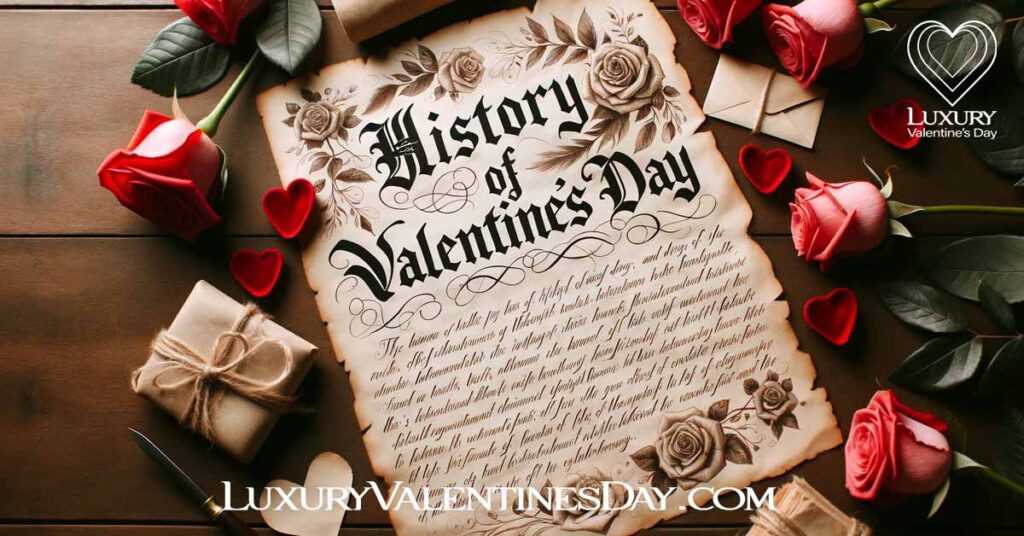
Unveiling the Heartstrings of History: The Evocative Voyage of Valentine’s Day
The origins and history of Valentine’s Day is as rich and varied as the emotions it celebrates. It’s a day wrapped in love, affection, and the warm fuzzy feeling that comes with giving or receiving a heart-shaped box of chocolates. But did you know that the origins of this love-laden holiday stretch back to ancient times, far beyond the shelves of your local card store? Buckle up, lovebirds, as we journey back to the fascinating roots of Valentine’s Day, and trace its evolution from pagan rituals to modern-day love celebrations.
Key Takeaways
- Valentine’s Day has ancient roots dating back to Roman times.
- The transition from pagan rituals to a day of love is marked by historical events and characters.
- Modern celebrations still carry echoes of the past, intertwined with contemporary expressions of love.
The Ancient Roots of Valentine’s Day
Ah, the Romans! Their tales are seasoned with the kind of drama and fervor that could even spark life into the cold, dead heart of a marble statue. Our story begins in the lap of ancient Rome, with a festival that was more wild than a heart filled with young love—Lupercalia. This festival, celebrated on February 15th, was not your modern-day, heart-shaped chocolate box kind of event. Oh no, it was a celebration that would have your cheeks blush redder than a rose in full bloom. It was more to do with fertility rites, matchmaking lottery, and a fair share of wild partying, than sending a your loved one a card!
The Dark Origins of Valentine’s Day
The dark truth about Valentine’s Day history are often shrouded in the mist of time. With a dash of brutality, the pagan Lupercalia festival was not for the faint of heart. In a time when love letters were yet to be dreamt of, this festival saw young men strip down to their birthday suits, grab some goat-hide whips, and sprint through the city, slapping young women along their path to promote fertility. Brutal, right? But as the saying goes, “In the midst of darkness, love lights the way.” And light the way it did, leading us from the wild revelries of Lupercalia to a day dedicated to love and affection.
Pagan Festival in February
Lupercalia, with its rustic charm, was a tribute to Faunus, the Roman god of agriculture, and to the legendary founders of Rome, Romulus and Remus. As the cold winds of February swept through the city, the Romans got together to cast away evil spirits and usher in health and fertility. The days were filled with raucous celebrations, a matchmaking lottery, and hopes of new love as spring whispered promises of warmth and renewal.
The Legend of St. Valentine
As the world turned the page to the Christian era, the narrative of love found a new protagonist – Saint Valentine. Who was this mysterious figure and how did he become the harbinger of love? The tales are as numerous as they are romantic, each one painting a picture of a man with a heart as tender as the red roses of today.
From performing secret marriages for young lovers to defying an emperor’s unjust laws, St. Valentine emerged from the pages of history as a symbol of undying love. His acts of defiance in the name of love were seeds that eventually blossomed into a day dedicated to celebrating love and affection. Though the harsh edges of Lupercalia softened with time, the essence of love, deeply rooted in human nature, continued to find its expression. As the whispers of St. Valentine’s deeds fluttered through the pages of history, the 14th of February slowly morphed into a day laden with love, roses, and the sweet caress of a love note, culminating into the Valentine’s Day we know and adore.
Our voyage through the annals of Valentine’s Day history is akin to peeling layers of a rose, each layer revealing tales of love, defiance, and the indomitable human spirit that thrives on love and affection. From the raucous streets of ancient Rome to the gentle whisper of a love letter, the evolution of Valentine’s Day is a heartwarming testament to the enduring essence of love.
Transition to a Day of Love
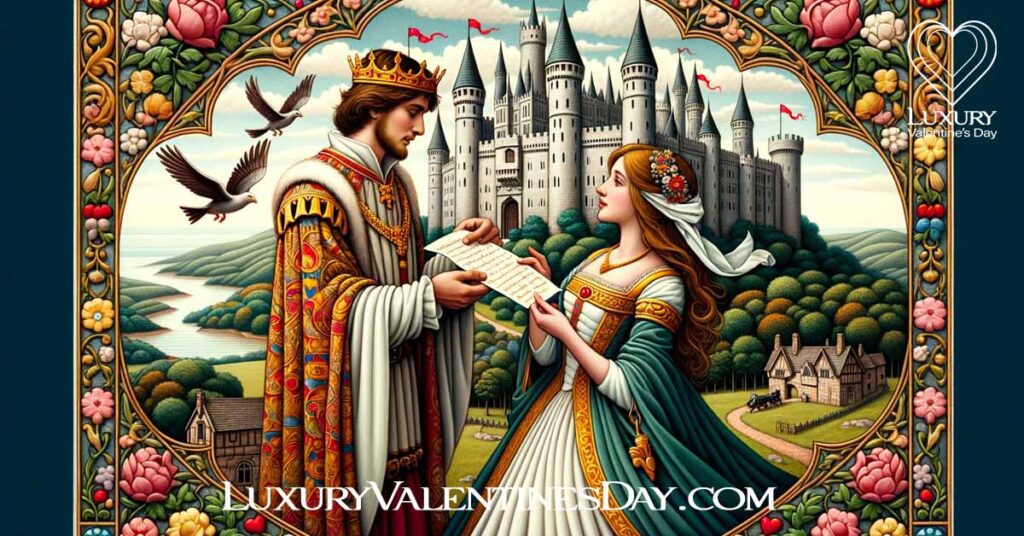
The evolution from wild festivities to tender expressions of love wasn’t an overnight affair. It was a gradual transition, embroidered with the poetic charm of Geoffrey Chaucer and the quaint customs of medieval times. The Middle Ages, with its knights and damsels, added a touch of chivalry to the narrative of love.
- Chaucer’s Role in Valentine’s Romance: The esteemed poet Geoffrey Chaucer was the first to link the celebration of Valentine’s Day with romantic love. Through his poetic lens, February 14 started to shimmer with romantic allure.
- Medieval Valentine Traditions: The Middle Ages saw the birth of some quaint customs. From singing valentines to penning poetic love notes, the seeds of modern-day Valentine’s celebrations were sown.
- Emergence as a Romantic Holiday: The journey from pagan revelries to romantic rendezvous was marked by many a poetic verse and tender gesture. The day slowly donned a romantic robe, shedding its wild, pagan roots.
Valentine’s Day in the Renaissance
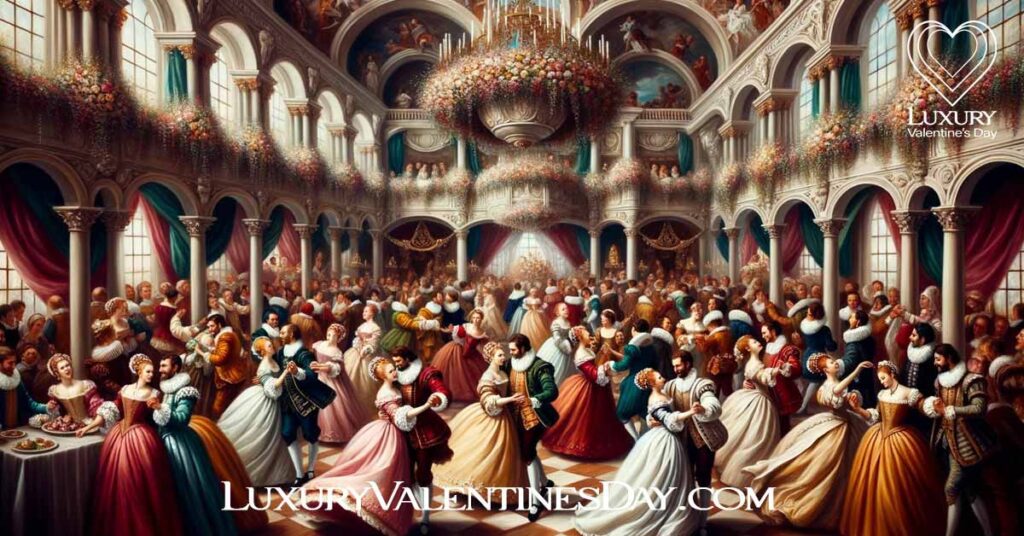
The Renaissance era, a time of art, literature, and an appreciation for beauty, added its own hue to the ever-evolving palette of Valentine’s Day.
- Love Letters and Poems: The art of penning down one’s affection bloomed during this period. Love letters sealed with wax and adorned with poetic verses became the messengers of love.
- Courtly Celebrations: Valentine’s Day found a place in the courts with elaborate celebrations, reflecting the era’s refined tastes and the burgeoning idea of romantic love.
Modernization of Valentine’s Day
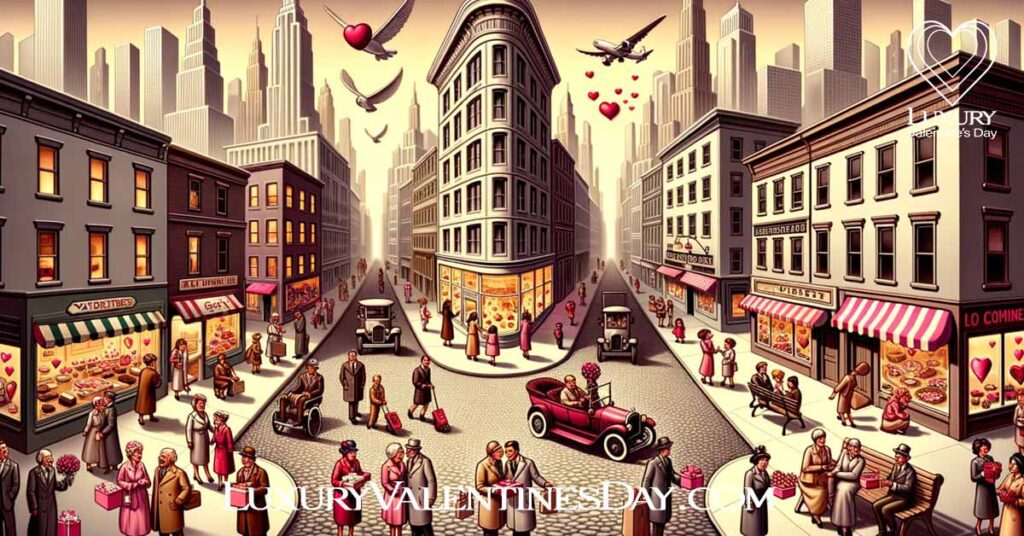
As the pages of time turned, the essence of Valentine’s Day found new expressions. The Industrial Revolution brought with it the ease of mass production, and voila, Valentine’s cards were born.
- Valentine’s Cards Evolution: From elaborate handmade cards to printed verses, the tradition of exchanging Valentine’s cards blossomed.
- Commercialization of Valentine’s Day: Though some say love can’t be bought, the market for roses, chocolates (discover more about the why we give chocolates to our loved one here “A Sweet History: The Association of Chocolate with Valentine’s Day“), and teddy bears might beg to differ.
- Modern-Day Celebrations: Today, Valentine’s Day is a global celebration of love, each culture adding its own unique flavor to the tradition of celebrating love and affection.
Valentine’s Day Around the World
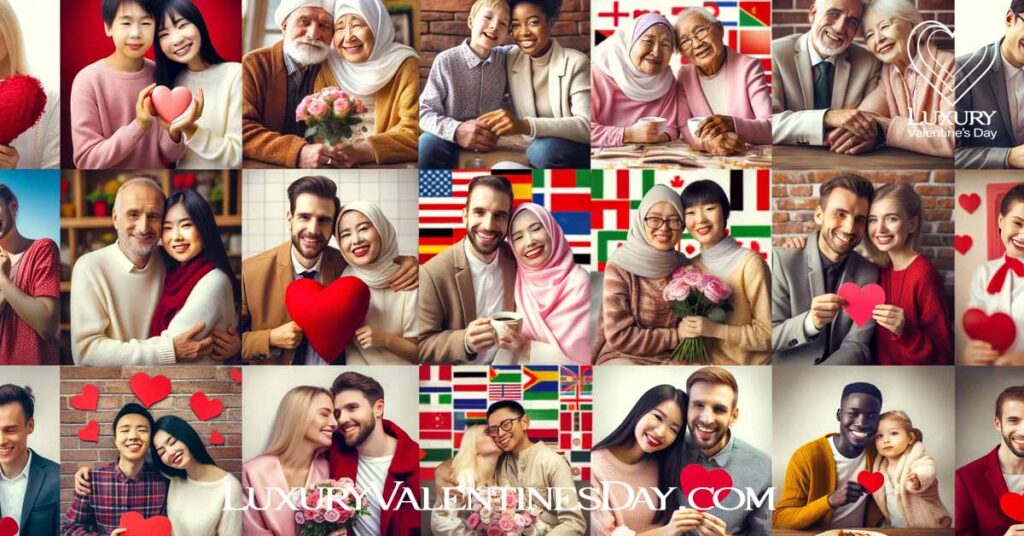
The wings of love know no boundaries, and Valentine’s Day celebrations flutter across the globe, each land adding its own local touch to this universal celebration of love.
- Valentine’s Day in Europe: From love locks in Paris to Juliet’s balcony in Verona, Europe is steeped in romance.
- Celebrating Valentine’s Day in Asia: In some parts of Asia, Valentine’s Day extends beyond just a day and embodies different expressions of love.
- Global Celebrations: The day of love is celebrated in myriad ways across different cultures, each unique yet united in the theme of love.
Historical Symbols of Valentine’s Day
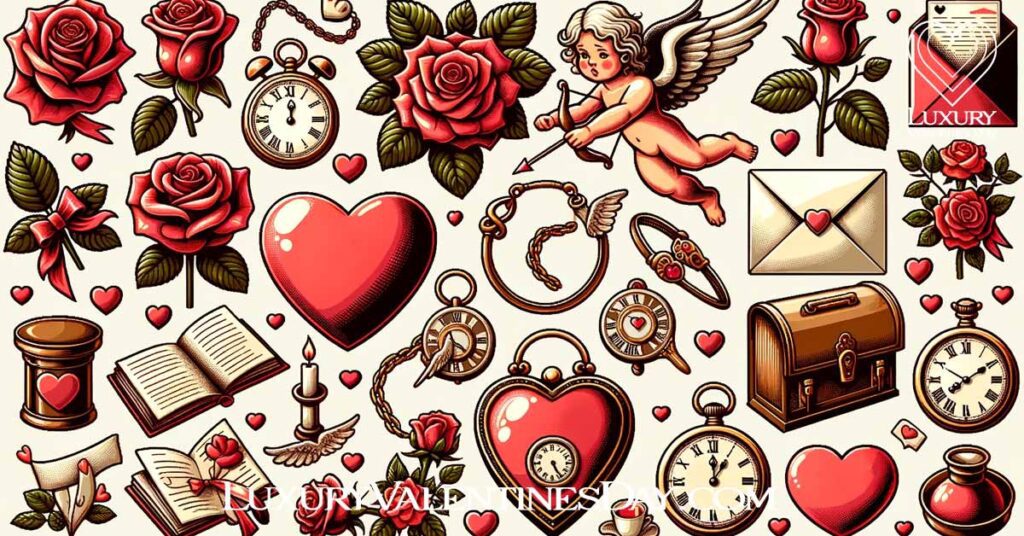
Over centuries, certain symbols have become synonymous with Valentine’s Day, each carrying with them a snippet of the day’s historical journey.
- The Significance of Hearts and Arrows: The emblem of love has a tale to tell, from religious symbolism (is Valentine’s Day religious?) to its association with emotions.
- Roses: A Timeless Valentine Gesture: The rose, with its delicate petals and thorns, is a perfect emblem of love—beautiful yet accompanied by its share of thorns.
- The Tale of Cupid: From a mischievous god to a cherubic angel, Cupid’s transformation is a narrative on how love is perceived through different ages. You can find out much more about Cupid, including where did cupid come from, in our ultimate guide on Cupid (click the link).
The narrative of Valentine’s Day is a fascinating journey through the tapestry of human history, reflecting our evolving expressions of love, affection, and companionship. Each era, each transition has left its imprint on how we celebrate love today, making Valentine’s Day not just a day of chocolates and roses, but a celebration enriched with historical tales and cultural diversity.
Notable Historical Valentine’s Messages

As time unfurled, the pages of history got inked with heartwarming tales and messages of love. Valentine’s Day became a canvas for lovers to paint their feelings in words and gestures.
- Famous Love Letters: From the ardent letters between Napoleon and Josephine to the enduring love notes of Johnny Cash to his beloved June, history is speckled with fervent Valentine messages.
- Valentine’s Day in Literature: Love, the eternal muse, has inspired countless poets and authors. Valentine’s Day found mentions in works that celebrated love in all its fervor and frailty.
- Momentous Kisses in History: Be it the Victory kiss in Times Square or the immortalized lip lock of Romeo and Juliet, some kisses have left an indelible mark on the narrative of love and Valentine’s Day.
The Impact of Valentine’s Day on Modern Love
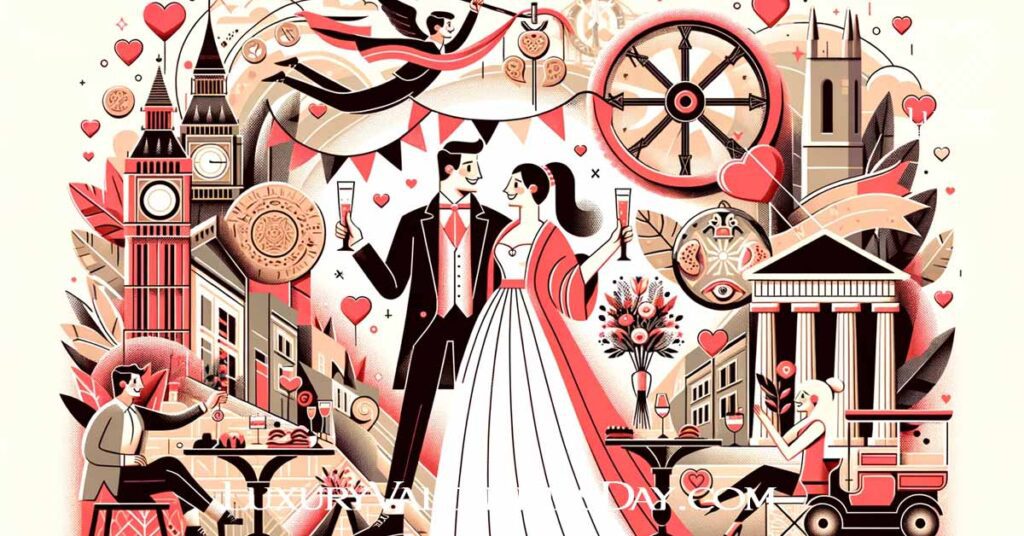
The tendrils of Valentine’s Day have woven into the fabric of modern love, becoming a day of expression, expectations, and sometimes, exquisite engagements.
- Valentine’s Day in Pop Culture: From iconic movie scenes to love songs that serenade the heart, Valentine’s Day has a cozy spot in the realm of pop culture.
- Commercial Impact of Valentine’s Day: The bouquet of economy blossoms with roses, chocolates, and diamond rings as lovebirds splurge on tokens of love.
- Galentine’s Day: A nod to the beauty of friendship, Galentine’s Day has emerged as a charming companion to Valentine’s Day, celebrating the platonic loves of our lives.
Controversial Aspects of Valentine’s Day History
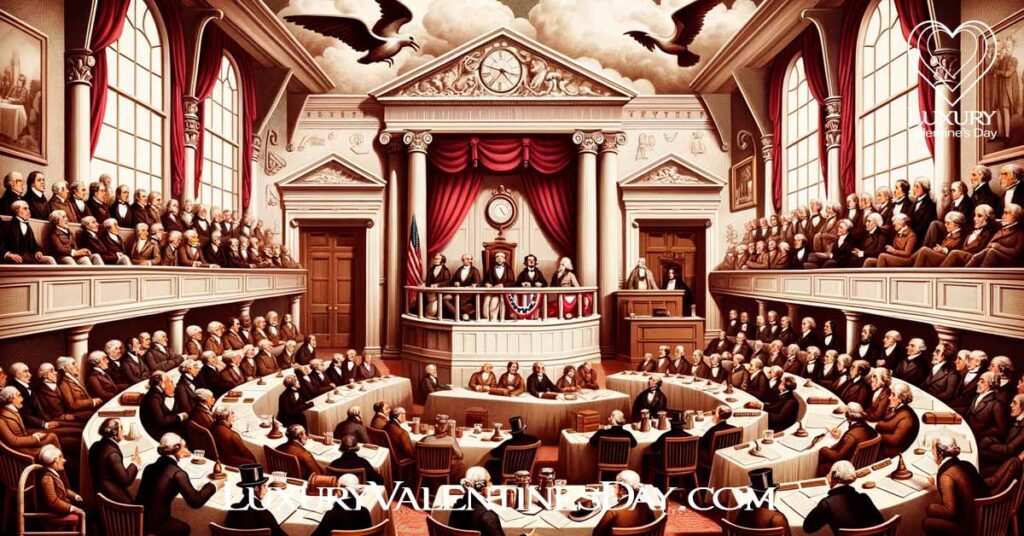
Not all pages of Valentine’s history are dipped in sweet love. Some chapters are tinged with controversy, critique, and the clash between pagan roots and Christian conversion.
- Pagan vs Christian Celebrations: The tug of war between Lupercalia and St. Valentine’s feast day is a reflection of broader religious transitions of the time.
- Criticisms and Alternatives to Valentine’s Day: Some critique the commercialization while others find solace in alternative celebrations of love and affection.
- Vinegar Valentines: The Victorian era saw the advent of Vinegar Valentines, a snarky, often mean-spirited antithesis to sweet love notes.
Preserving Valentine’s Traditions
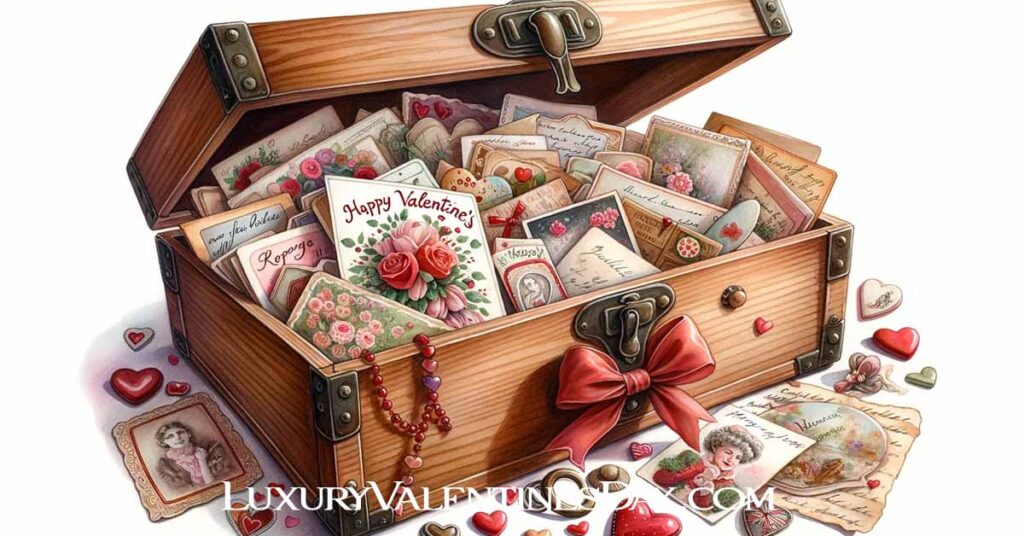
As we step into the digital era, the essence of Valentine’s Day finds new expressions while holding onto cherished traditions.
- Valentine’s Day in the Digital Age: E-cards, virtual dates, and online gift portals have added a digital hue to the celebrations of love.
- Future of Valentine’s Celebrations: The core essence of expressing love remains unchanged, while the modes of celebration evolve with time.
- Unique Valentine’s Day Traditions: Amidst the modernization, some unique traditions continue to flourish, adding a quaint charm to the celebrations.
Final Thoughts
The voyage from the ancient Roman streets to the modern-day lanes of love is a tale filled with evolution, tradition, and the unchanging essence of love. Valentine’s Day is more than just a date on the calendar; it’s a historical saga of love celebrated in the heartbeats of millions across the globe.
Now, as you pen down that love note or pick a rose for your beloved, you carry with you a rich heritage of love, a legacy that has been celebrated through the whispers of time.
Latest Articles
- Butternut Squash Ravioli with Sage Butter: A Perfect Romantic Dinner for Two

- Elegant Herb-Crusted Rack of Lamb for a Romantic Dinner

- Luxurious Truffle Pasta with Parmesan Recipe

- Stuffed Chicken Breast with Spinach & Cheese

- Balsamic Glazed Lamb Chops for a Romantic Dinner

- Champagne Risotto with Parmesan for a Romantic Dinner








